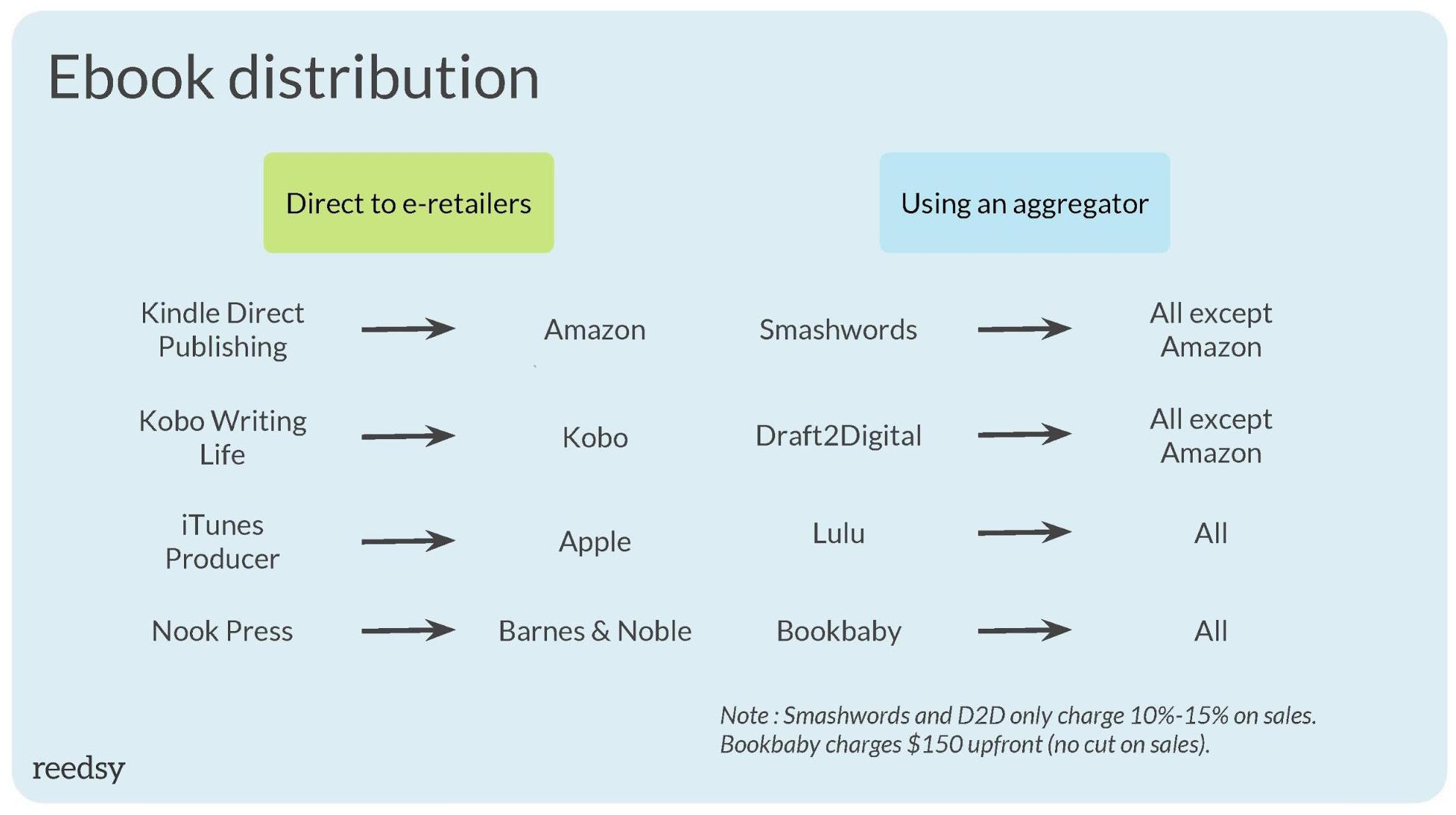Ebook: an author’s best friend
Episode #6 of the course How to self-publish a book by Emmanuel Nataf
Now that your book is ready to take on the world, let’s get it out there so people can buy it!
The easiest (and perhaps best) way for you to distribute your book is through ebook retailers like Amazon and Kobo. In a few steps, you can reach a global market with little to no upfront costs. You’ll also get to keep up to 70% of the retail price—which is not bad considering how most published authors get less than 10% from each paperback sold.
Choosing a method of distribution
You can either upload your book to all major ebook retailers individually, or use an “aggregator” to make your book available for sale across multiple retailers.
You can either upload your book to all major ebook retailers individually, or use an “aggregator” like Smashwords, Draft2Digital, and Bookbaby to make your book available for sale across Amazon, Kobo, Apple, Barnes & Noble, and others. Aggregator services are pretty efficient, but be prepared to give up a small cut of your sales revenue.
Make sure you understand the terms involved with each of these services. For example, there may be restrictions regarding changing the price of your book once it’s been published. If there’s a moral to this story, it’s this: do not let yourself get shortchanged by momentary convenience.
Perks of being ‘exclusive’
Most ebook retailers are non-exclusive, which is fantastic. It means you can make your book available across multiple platforms and reach the widest group of potential readers, whether they’re Kindle readers, Nook owners, or Apple book buyers.
However, being exclusive to one store will often have its benefits. Consider Amazon’s KDP Select program as the perfect example. In exchange for 90 days of exclusivity (not selling your book on Kobo, iBooks, etc.), the Kindle Store offers authors a (slightly) better deal on royalties, plus access to certain promotional opportunities like placement on their popular “free ebooks” page.
Do you need an ISBN?
ISBN stands for International Standard Book Number. Do you need one for your book? It depends: Amazon has its own internal tracking number assigned to your book, the ASIN, so you could do without it, if that’s what you really want. Since it’s unlikely that you’ll want to sell your book only on Amazon, there’s a high chance you’ll need an ISBN for your book.
That’s all for today! Come back next time find out about another great way you can distribute your books—print-on-demand services.
Recommended book:
“Write Short Kindle Books: A Self-Publishing Manifesto for Non-Fiction Authors” by Nathan Meunier
Share with friends


